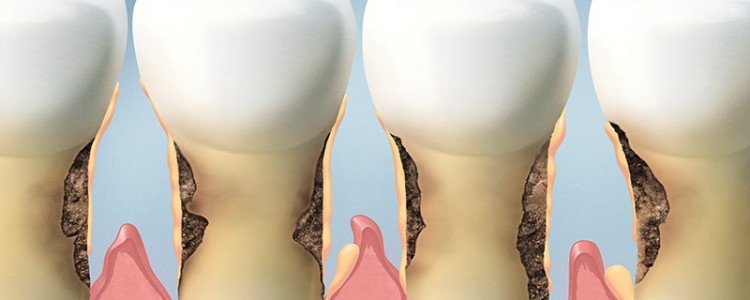As with any other surgical procedure, there are a variety of internal and external factors that cause complications or even total failure of the treatment. Dental Implants are no exception. Dental implants are designed to be a permanent replacement for a missing tooth or teeth and are a popular alternative to removable dentures or fixed bridges. They anchor artificial teeth directly into the jawbone which makes them a more functional and aesthetically pleasing restoration. That said, they are also more expensive and have longer treatment and recovery times.
While the track record of successful dental implant procedures is impressive, some patients do experience some complications. The following are a few of the possible causes and reasons behind dental implant problems or failure that you should be aware of before deciding to get dental implants or as you start the post-surgery healing period.
Success Rates
More than 95% are completed without incident (up to 98% if they are cared for properly). The majority of the problems that do occur are minor and easily resolved. If something does go wrong, consult your dentist or surgeon as soon as possible. A fast response enables them to take corrective actions before you or the implant is threatened by additional (more serious) problems, which is why it’s important to be aware of the possible complications. Other ways to improve the chance of success include finding an experienced dentist, planning the treatment schedule carefully beforehand and following aftercare and oral hygiene instructions to the letter.
Failed Osseointegration (Implant is Loose or Fell Out)
Osseointegration describes the formation of a direct functional and structural connection between a person’s bone and an artificial implant. This process takes place over the course of several months after the implant is placed. Failure of an implant is often attributed to the failure of the jawbone to fuse together properly with the implant. An implant is deemed a failure if it is mobile, falls out or shows signs of bone loss of more than 1 mm after the first year and more than 0.2 mm after the second year. Several factors can cause this to happen including incorrect positioning, insufficient bone density or volume, overloading, damage to surrounding tissues, external force/sudden impact, fractured implants or even a reaction to anesthesia. Several of these causes are described below.
Before an implant can integrate properly into a jawbone, there must be a healthy volume and density of bone present. For patients who lack adequate bone height, width or length, procedures such as a sinus lift or bone graft can help add space and bone mass, but significantly add to both the total treatment time and cost.
It’s interesting to note that the density of bone beneath missing teeth deteriorates over time since it is not being stimulated by the forces of chewing. Patients who have been missing teeth for months or years often require bone grafts before they can get implants.
Peri-Implantitis (Infection)
Peri-implantitis, or infection, can set in when bacteria is present during oral surgery or any time post-surgery without proper dental hygiene. It can also be caused by the dental cement used to secure crowns onto the abutments when it escapes from under the crown during cementation and gets caught in the gums.
It is a condition that involves inflammation of the gum and/or bone around the implant and is one of the common complications. A form of periodontal disease, peri-implantitis can cause bone loss and implant failure. It can sometimes be treated, but in most cases the implant must be removed. There are cases where it does not occur until several months or years following the surgery. Patients with diabetes, smokers, patients with thin gums and those with poor oral hygiene are at greater risk of developing the infection. Smoking in particular significantly decreases the success rate of an implant.
Nerve & Tissue Damage
Another possible but rare problem is damage to the tissue surrounding the implant, specifically the nerves. When an implant is placed too close to a nerve, patients may experience chronic pain, tingling or numbness in their cheek, gums, tongue, lips or chin. The nerve damage could be temporary or permanent and the implant might need to be removed. In almost all cases, this problem is caused by mistakes made by an inexperienced dentist.
As with other invasive surgeries, some tissue damage will occur during a dental implant procedure. Some bleeding and pain is to be expected for a couple days after the surgery, but if the pain is extreme, the bleeding excessive or they it last longer than a few days, you should contact your dentist.
Overloading
In certain cases, the oral surgeon may decide to perform immediate loading during a dental implant procedure. Immediate loading is a one-stage treatment method where the crown and abutment are placed on the dental implant right after the post is surgically inserted. The normal process consists of two stages and provides time for the implant to integrate with the bone before adding the components that protrude above the gums. Benefits of this method if problems do not occur include less post-surgical care, quicker recovery and shorter treatment times. However, this all-in-one procedure can lead to complications since implant integration is incomplete.
Overloading is the term given to failures caused by undue pressure or forces placed on the protruding abutment and/or crown. These forces can easily disrupt the osseointegration process. Patients who have inadequate bone mass may not be eligible for immediate loading.
Sinus Problems
Sinuses can be a major challenge for dental implants replacing teeth in the upper row. In addition to the presence of the sinuses, insufficient bone quality and quantity in the upper back jaw can make dental implant procedures in this area difficult.
To develop a strong bone foundation, an oral surgeon may perform a sinus augmentation. This procedure involves lifting the existing bone into the sinus cavity to create enough space that for a bone graft. The goal is to create more bone in that area in order to support a dental implant.
However, if the implant protrudes into the sinus cavity, the area can become infected and/or inflamed. An X-ray or CT scan can easily detect this problem and corrective surgery can then be performed. Patients should inform their oral surgeon of sinus issues prior to the implant procedure.
Other Risks & Causes of Failure
The following are other risks and causes of dental implant challenges for patients to consider.
Foreign body rejection – Similar to organ transplants, it is possible that a patient’s body will reject the dental implant. In this case, the patient’s body see the dental implant as a foreign object that does not belong and pushes it out.
Failure of the implant itself – Even though they are made of metal (usually titanium), it is possible for the post to bend or even break. This much less common than it was years ago thanks to advances in implant design and materials, but it is still possible. An implant can crack or fracture if it is subjected to excessive external forces. This could be a sudden impact like a blow to the face or excessive pressure over a period of time like grinding teeth or an unbalanced crown.
Allergic reaction – Most implants today are made of a titanium alloy that contains traces of nickel. While quite rare, some patients can have an allergic or inflammatory reaction to titanium. The symptoms can range from itchiness to Chronic Fatigue Syndrome. The MELISA test is the only scientifically-proven way to determine whether or not you have a titanium allergy and what the severity is.
Contraindications
In addition, there are a number of conditions and external factors that can be reason enough for a dentist to withhold dental implants from a particular patient. There are very few reasons that would absolutely prohibit implant dentistry, but the following points should be taken into consideration.
- Failure to locate a primary nerve in the lower jaw
- Insufficient bone height, width or length
- Uncontrolled Type II diabetes
- Oral or intravenous bisphosphonates
- Bruxism (tooth grinding or clenching)
- Smoking
While that might seem like a long list of highly-unpleasant problems, remember that serious problems are rare and success rates are 95%+ as long as you find a trusted dentist to do the surgery and look after your teeth. Regular visits to the dentist can help manage most problems easily thanks to early detection. That said, be sure to contact your dentist as soon as possible if you have any of the symptoms mentioned in order to prevent implant failure or at the very least avoid developing more serious health problems.
What to do if an Implant Has Failed
All is not lost if a dental implant fails. It is sometimes possible to save an implant (if help is sought quickly enough) by building up the bone & gum tissue surrounding it. However, in most cases the implant must often be removed and the area left to heal. An implant can be attempted once the area has recovered, which can take up to a year or until the dentist determines that the site is suitable. Depending on how well the area heals, a bone graft might be required to provide a better foundation for the implant and improve the chance of success.
If the implant fails a second or third time, then it’s a sign that either:
- The dentist doesn’t know what they’re doing/isn’t capable of successfully completing the procedure or
- You have insufficient bone density, an allergy or are otherwise unsuitable for implants
The best way to figure out which situation you’re in is to get an honest second opinion from another dentist to see if they think that implants will work for you and to inspect the work the other dentist did.
In the first case, there are two main courses of action:
- Ask for some or all of your money back and start looking for a new dentist.
- Consult a legal professional to determine if you have grounds to sue for negligence or malpractice.
If you fall into the second category (you are the cause of the problem), your dentist should be honest with you and suggest other tooth restoration solutions such as dentures or bridges as implants probably won’t ever work.
In either case, the most respectable dentists will refund you for the failed implants or offer you credit towards an alternative restoration. However, at the end of the day, your dentist’s responsibility depends on what it says in your agreement.












